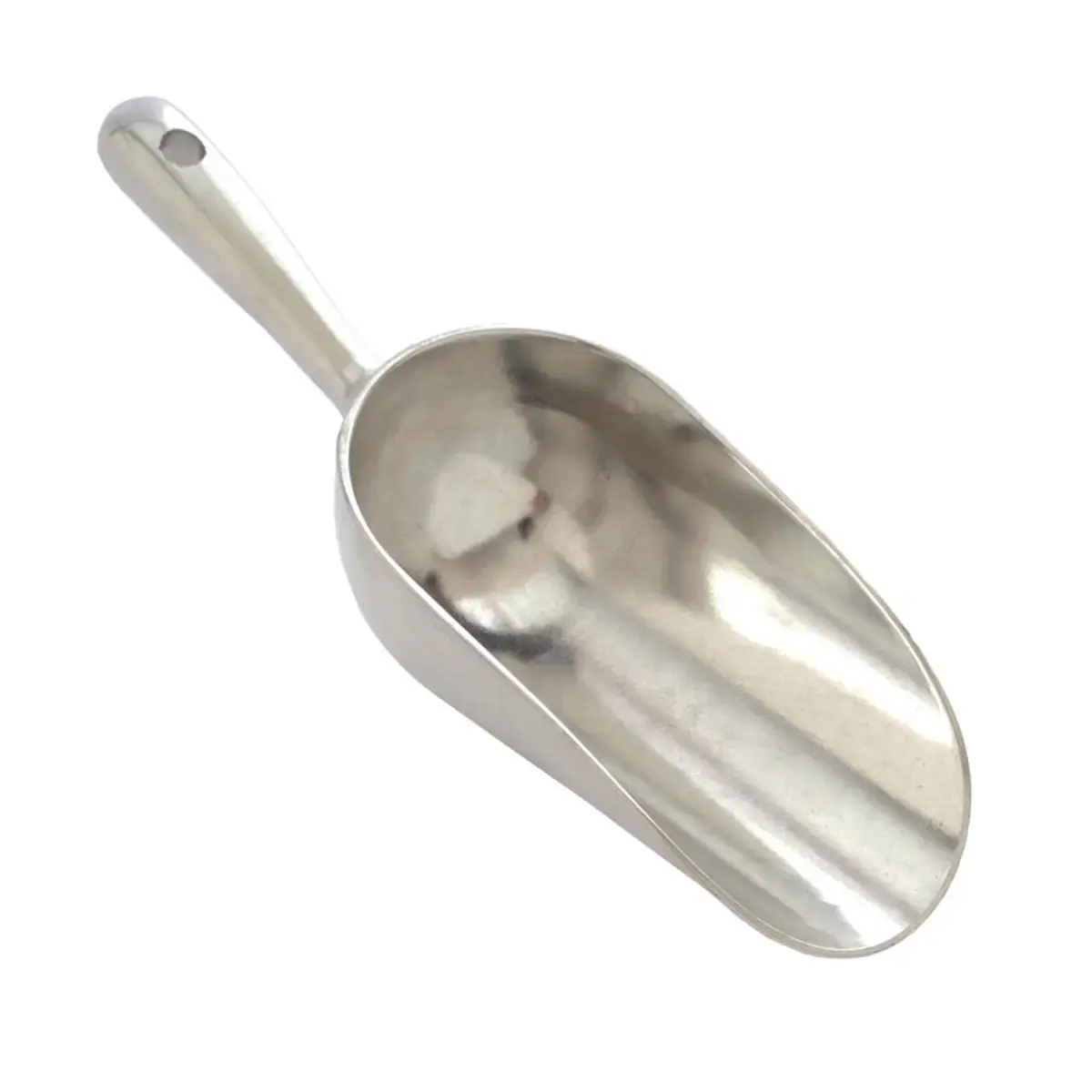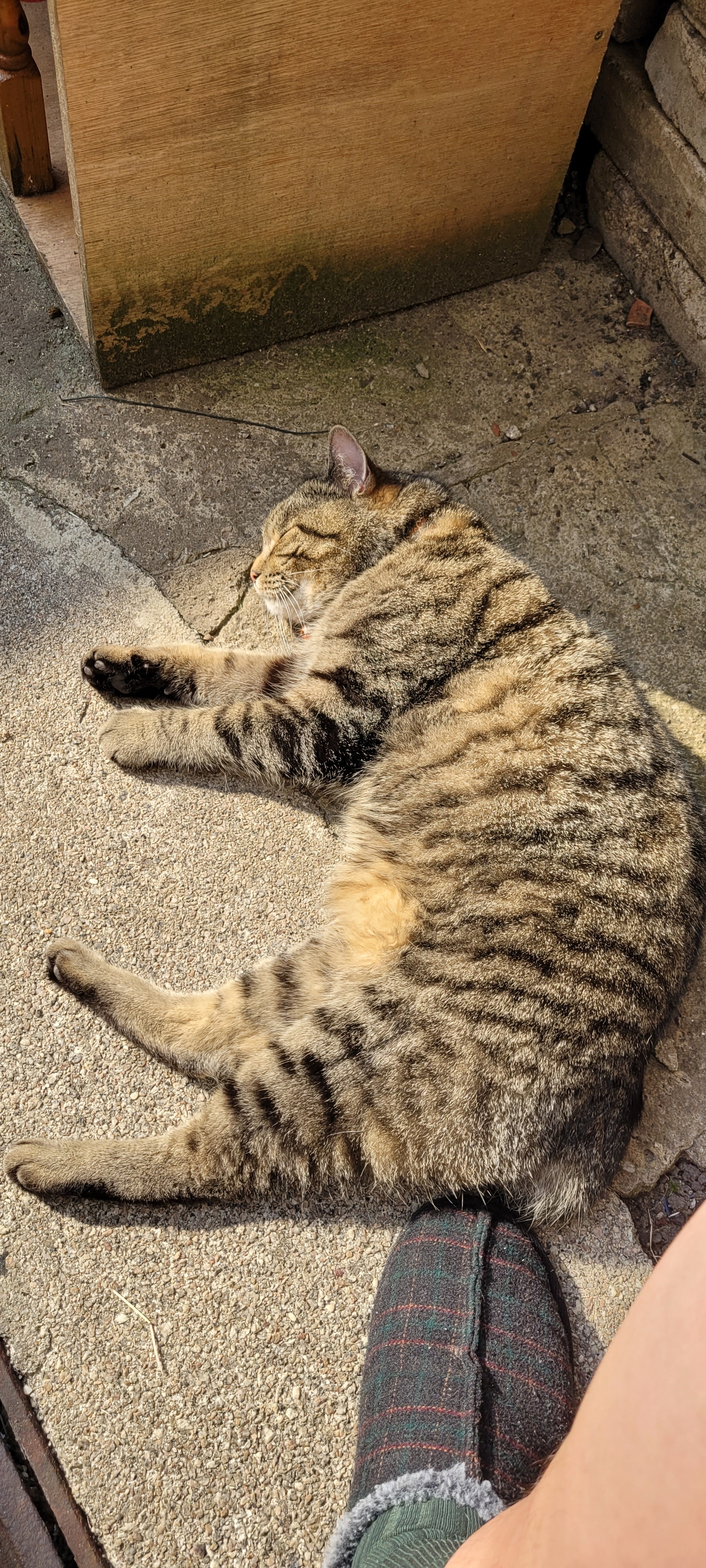Gas stoves fill the air in your home with particulate matter (pm), which has been found to increase cancer risk in the long term.
So next time you buy a stove, consider choosing an induction stove.
Btw, gas stoves being better or faster than induction is a myth. They have certain specific advantages, but they are actually slower.
Obligatory Technology Connections video:
https://www.youtube.com/watch?v=eUywI8YGy0Y
gas stoves being better or faster than induction is a myth. They have certain specific advantages, but they are actually slower.
If you have 380V 16A induction, it’s not even close.
But be careful, if you have ceramic coated pans for instance, and you use the high power settings to heat it up, your pans won’t last long, as the ceramic may crack because of the fast heat up. We lost 2 pans that way. 😋
We also had a cheap cooking pot, where it developed a crack between the main pot and the apparently cheaply attached heat spreading bottom.
This made the pot sputter because water was collected in the crack when washed.
When I boil eggs, i time it from the moment the water is boiling. But with out new stove, the water boils so fast, I’ve had to add 2 minutes to the time they boil!!Our electric kettle is 2.2 kW. But boiling a liter of water on the stove is still more than twice as fast!! Meaning the stove must be putting more than 4.4 kW to the pot, on the smallest cooking spot!!
Obviously that is only possible for 1 spot at a time, I figure the max must be around 6kW combined.
They have certain specific advantages, but they are actually slower.
I can’t think of any advantages, gas stoves are slower, they are harder to clean, they give off an insane amount of wasted heat, which is uncomfortable in hot weather, and they noticeably degrade air quality unless you have very good ventilation.
The only possible advantage I can think of, is that you can use cheaper equipment on gas. but not always, because non metal handles tend to get ruined on gas stoves.
All in all induction is superior. 😎
Just FYI, I have gas heated water, and a gas stovetop. So I get around 55°C water to start, and the big burner is 5.5kW.
Still use lukewarm water in my kettle for tea. I mean what’s the hurry?
Cooking isn’t just heating stuff as fast as you can, what a curious thing to consider.
and the big burner is 5.5kW.
Yes, but there is enormous waste of heat with a gas stove, so your 5.5 kW big burner, is only equivalent to half of that compared to induction. Our smallest plate at 4.4+ kW is more powerful.
Cooking isn’t just heating stuff as fast as you can, what a curious thing to consider.
That’s a straw man argument, I never claimed any such thing.
But the fast response time makes it easier to adjust correct temperature/levels, and this was for many years a major argument from users of gas, but this argument is completely irrelevant now.
I also mentioned other drawbacks of gas.PS: I NEVER use preheated water for cooking anything, preheated water is generally not meant for consumption. It needs to be designed for that specifically, so unless your preheated water is guaranteed food grade, you shouldn’t use it.
About the strawnan, the discussion was about heating twice as fast with induction, sorry you got caught in the crossfire.
Also, I’m not talking about pre-heated water (bleurk!), I have gas heated water, it heats on demand, so my thé is ready 20 seconds faster than yours! /Jesting
I’m just curious about almost a cult following about induction heating, yes it’s better than almost anything else, but like only my Scandinavia friends has it or talks about it, my French and Italian friends usually don’t or when they do I know because I see it in their kitchen, and with them I talk food, what I’m cooking, what they’re cooking, how to cook this or that, not how fast I can warm water.
No ill intent meant, it’s just so strange for me :-)
gas heated water
In the 60’s and 70’s we also had a gas heater for hot water, and that heater was definitely NOT suited for drinking water, as the pipes the water was heated in were copper.
The heat source is not the important thing, it’s how it’s designed and the materials used. It needs to be positively approved as food grade. By preheated I mean heated before it comes out of the tap.only my Scandinavia friends has it or talks about it
IDK why that is? But I’m Scandinavian too from Denmark, so there you go. 😋
my French and Italian friends usually don’t
AFAIK induction was under patent protection for a long time, and that patent was held by a French company. French stoves are nearly non existent here, it’s all local, German, Swedish, Italian, British or Spanish.
Maybe Induction was cheaper in the past in France and Italy? It only recently (about 10 years ago) became dirt cheap here, as in costing basically the same as the alternatives.
I remember back in the 80’s inductions was about 2-3 times as expensive as a quality stove that was not induction. So Halogen (the ones with red light) were dominant for many years. And also pretty good, but not quite as good as gas for cooking. But convenient in other ways.not how fast I can warm water.
It’s not a big issue, but coming from Halogen it clearly changes the way you use your stove, because it’s so much more powerful and responsive.
About how much faster it is, I had a debate with my brother in law who didn’t believe it could be that much faster than an electric kettle. I don’t remember the exact times it took, but the induction was as I mentioned more than twice as fast! That was a nerd thing because we are both a bit nerdy. 😋
I’m fine cooking on Gas, that’s what we used when I grew up, and when i moved to my own apartment, then for many years I used halogen, and now we have induction. IMO induction is superior, AND it’s also the most energy efficient.So IMO the best reason to NOT switch to induction is if you have something else you are happy with, then the “if it works don’t fix it” may be the way to go for you.
One thing about gas that annoyed me though, was if you wanted to do something fast, and you turn it up, the flames spread wider, so if you wanted to boil a liter of water fast, or heat a stored meal, it was not very efficient at that. Because the flames had a wider spread than the size of the pot.
Interesting, I have rarely seen induction in France up to just a couple of years ago.
I did rent a lot though, so maybe the landlords are cheaping out :-). Every time I rented an AirBnB in Sweden they had induction (at least 10 times, all in the “big” cities), maybe 1 in 3 in Denmark. It sure feels like a cultural thing at the moment, I guess gas will eventuay be phased out, except for barbecues & holiday mobile homes and so on.
I’ll definitely weight the pros and cons the day I need to change, but I will defend my setup till I die (of cancer, explosions or whatnot it seems ^^) if I can’t get one with basic knobs!
Gas is not perfect, but I do like it, it’s largely enough for my cooking needs too.
Cheers!
If you have 380V 16A induction, it’s not even close.
Is that a common setup? That sounds very high-powered
I checked mine, which is a fairly basic model, and it’s actually 400V.
This is very common in Denmark, and I suspect in much of Europe.
This is commonly used for stoves, ovens, dishwashers, dryers and washing machines. 30 years ago it was vastly dominant.
But today most 380/400v equipment can also run on 230/240v (2 phases instead of 3). Many now use standard 230/240v because most equipment has become more power efficient.PS: Apparently we actually have 400v for 3 phases. So our stove is 400v. I just chose the lower number to not exaggerate.
I’ve tried to find out why both numbers are used, and all I can find is that it’s due to regional differences?Depends where you live, 240v/30 or 50 amps is the standard in North America
Guess that’s what threw me off. 240v is what our electric (non-gas) appliances use in the States, 380v sounded like it could be commercial-style equipment or something
Correct, it exists for commercial applications but sometimes even the grid where you’re at might not support it (if you’re in a more remote location).
It’s the standard for all homes in Germany
Does this apply if you use extraction?
I’ve had induction for many years, but I really want a combo with both. Making wok on induction is crap as the sides don’t get hot at all. I also have a hot spot in the center of all frying pans which is annoying when frying bigger things or several things at once.
My dream is a Gaggenau or Bora top with one side induction and one side gas. I already have the mid extractor with outside piping, so no recirculation.
I just cannot justify the $10k price tag and nobody else makes it with a fan in the middle.They do make professional grade induction burners for woks that are curved, they are beautiful but prohibitively expensive
Yeah I’ve seen those, but not on a hob with downward draft in the middle.
Maybe someone will make them in the future or I win the lottery and can pay Bora/Gaggenau prices….
The studies I read, there was no ventilation / exhaust fan. The point was that low income households using these stoves often don’t have proper ventilation and it makes them dangerous. I didn’t find much evidence that using them with proper ventilation is actually a serious problem.
Further, cooking releases all sorts of chemicals from incomplete combustion in the air if something is burning, as well as the toxic chemicals release from nonstick cookware at very high temperatures, so cooking without ventilation is bad for your health would be the message I’d take away. I find most people are completely unaware of the hazard.
Very few residences have proper ventilation. In the US, a microwave above the stove is common. Microwave often do have a fan function, but the vast majority don’t vent outdoors. I doubt that running air through a very thin filter will do much good.
I hate this. I think it should be illegal. Or make a building code that there has to be a real extractor hood above the stove in all cases.
Even charcoal grills inside are fine with proper ventilation. So you’re right, but your also not saying very much.
Yeah I’m not sure what the purpose of the comment was. To convince people to continue using gas on the off chance it won’t increase cancer risk? That’s not a compelling reason to use gas. It might not kill me.
I’m pretty sure the comment was to emphasize the importance of a proper working stove hood.
it also emphasizes the importance of knowing how the items built into your house work.
With proper ventilation you can do everything, you can work with hazardous gases and nuclear materials, if the ventilation is sufficient.
Radioactive particles perhaps but nuclear radiation is not affected by airflow
But if the flow is good enough, all the material will be sucked away before it has time to emit.
Radiation ventilation is fun to say
Thanks for the clarification.
I’m not even sure I would call it “low income households”, more like “older building/houses”. Plenty of expensive apartment units are in old buildings (I’m looking at you NYC) without proper ventilation.
I own a unit in a co-op in a building that is over 100 years old. I have a gas stove. There is a vent on my above-range microwave but it’s just a filter that blows it back into the room. I do a lot of cooking. I’m in danger.
Indeed. Charcoal filters are to catch some odours, the aluminum will catch some grease, but ‘natural gas’ is a whole lot more than methane, and think the same is true for propane.
I’ve always cooked on radiant electric (not induction) stoves, but gas stoves are amazing. Literal fire just works like nothing else. Faster cooking != Better cooking, why are you conflating them?
I’ve never lived in a closed up efficient new house either, those seem like anything you cook would be problematic. All cooking releases something.
Will almost certainly stick with electric personally (whole house is electric only) but if I had an unlimited budget it would be gas stove, big whomping vent fan, and ovens with both steam and fan.
Induction worries me because we had an induction plate and it made a terrifying shrill noise, I worry that the high end ones do the same but we can’t hear it. Which seems awful for the dogs and cats.
Why bother with gas if resources aren’t an issue? Something savagely luxurious about cooking over wood. Primal but decadent.
Most induction burners are silent. I was an adamant supporter of gas over electric, but induction is just superior.
I’ve got a gas stove and a highly inefficient house. I recently got an air quality detector and yeah, it goes off every time I cook anything on the stove. Not so much if I use the oven.
I’m pretty sure the premise is correct… though unsure as to the degree. I would get an induction stove in a heart beat. Just… you know… cost and all. (Buy the stove, update my wiring to not suck where the stove would go, things like that)
I didnt watch the video yet but do you have any estimates on how much pm is released? Where I live the air contains about 50 mikrograms per cubic meter and I’d like to know which is unhealthier: using a gas stove without ventilation or going outside and breathing fresh air
We swapped out a gas for induction, it’s amazing to be able to put the temp down below very hot. Also very responsive to power changes, and can wipe clean.
I love my induction hob for all the reasons you mention. It is by far the best hob I’ve used - much better than gas - and I cook a lot. The only slight downside is ensuring you have the right pans, but they’re widely available. My enamelled cast iron casserole pot works a treat.
the maillard reaction causes cancer. I’m still not boiling my beef.
The few times I have prepared meat while trying to minimize the maillard reaction, it was still quite tasty.
That said, I agree that cancer risk is relative, and you can’t avoid all risk, even if you are happy to try.
I hear sous vide steak can be quite tasty.
I hear sous vide steak can be quite tasty.
It is the best way to prepare steak, but you still need to sear it afterwards. The steak can be cooked to a perfect medium-rare all the way through… But you still need to throw it on an ultra hot skillet with some butter and rosemary afterwards, to add the crust to the outside.
The information I have says sous vide is not as good as a “standard” reverse sear in an oven. But, I haven’t tried either.
My experience is that the “crust” on meat is entirely optional, and while I don’t aggressively avoid it, I don’t seek it out when I am preparing my own meat.
I have tried both, and can confirm that sous vide is superior. With a traditional oven prep, you get a pink rare center and brown medium-well outer edge. With sous vide, you get a perfect light pink medium rare all the way through, with only a thin edge of brown from the sear. With sous vide, you just sort of roll it across the skillet on the way to the plate, to get that crust but avoid cooking the interior more.
But to be clear, if you skip the sear with sous vide, your steak will be pink. You’ll miss out on a lot of flavor and mouthfeel from the sear. Sous vide technically cooks the meat, but doesn’t cause any browning (at least, not when cooking it to medium rare) because there isn’t enough heat to cause the Maillard reaction.
Since the Maillard reaction and all its VOCs are the most likely source of meat-related cancer risk, I will gladly eat pink (but safely cooked) meat. In fact the center pink bits are my favorite parts a traditionally cooked steak / prime rib.
You can also minimize the maillard reaction by not eating meat. Just putting it out there.
Oh, my primary diet is beans, quinoa, nooch, and almond milk. Snacking is popcorn with, evoo, and Kernel Seasonings ™.
I still eat meat not infrequently, but not everyday, and I rarely prepare it for myself. Still, I should avoid it more. It’s unnecessary, and even just a couple of years ago, I ate it less of it.
The food I cook for my family does involve the maillard reaction for some of it (salmon patties, roasted veg, french fries, lasagna, pasta w/ meat sauce). I pressure cook the chicken and rice, so I think that mostly avoids maillard. I only eat on the family food to clean it out of the fridge when I don’t think it’s worth serving to anyone else.
Thank you for your concern.
Photons cause cancer so I guess I may as well do nothing at all.
I mean photon is a pretty broad category so I’m not sure if you’re saying that gamma rays cause cancer or 5g does.
Again… You can and should swap in hot sunny areas specially California. I’m from California originally. You gotta be retarded not to have solar panels now. But over in places where shit freezes like here near Seattle, the entire north, and or maybe also texas, thar doesn’t work. Here in the PNW, we have all electric kitchen, but also a wood burning chimney and a gas burning central heater. If the power is out you get no heating and die…or you keep warm with a chimney fire. Well heat pumps also work using propane or natural gas. There are also gas powered heaters that don’t need electricity.
Alright so you screwed up posting this, because I’m actively looking for a dual induction burner setup, and now I want your advice. Ideally I want a “linked” dual burner so that I can put a square skillet pan across both burners, there’s basically like one of those online, and then a bunch of dual burners that are not linked and slightly different power on either side. Wat do? Anyone have a good experience with this situation yet?
You should just get the impulse cook top last range you’ll ever need, super cleanable, magnetic knobs— is expensive but will be the last one you’ll need: https://www.impulselabs.com/
That one does look amazing! I’m unfortunately limited to a portable one in an apartment. Added to the bucket list though for sure!
God that looks good, the power and exact temp display is pog
This looks brilliant in a lot of ways. For me being able to set a precise temperature would be incredible. I have some doubts about the battery system though. I can understand the utility but surely it will degrade over time? I can’t see how it’s the last stove top I’ll ever need. The battery combined with the software update thing makes it feel like another product I’ll have to rebuy every 3 years or so.
I am with you on this, I don’t want a cooktop with a damn battery and software updates. That’s ridiculous.
IT HAS KNOBS IT HAS KNOBS ITHASKNOBS OHMYGOD
Sorry, I got a bit over-excited. I hate capacitive touch controls in absolutely anything with a passion and I in particular hate them on my stove because I don’t want my stove to start beeping when I wipe it, nor do I want the controls to malfunction any time they get wet because I accidentally overboil the water.
Receives Software Updates
I feel iffy about this part though. I don’t want my stove to have software on it.
What doesn’t?
Even tea causes cancer
I hate this mentality. There are things that are legit concerns and then there are things which aren’t. Please don’t use the same logic for taking up smoking.
It’s completely baffling that there are people unironically still defending gas stoves in 2025. There’s no discussion to be had on the subject any more, induction is superior and that’s final.
When the power goes out in sub zero temperatures, and your heating does too, it helps to be able to make hot water on the stove to warm up.
Otherwise, yeah induction is better.
A $50 dual burner camp stove solves that (or even cheaper, a $12 single burner backpacking stove if you have less space).
While you’re correct in general, in places where the power is out for a week, a camping/backpacking stove would be ill-suited to the task of keeping multiple people warm and fed. Especially in a house and not an apartment.
A gas furnace won’t keep you warm when the power is out, either. I will say a camp stove feeds just as well as a regular stove, after all, how often are you using more than 2 burners simultaneously?
A gas (or wood) stove will, which is why they’re still common in rural areas that face power outages more frequently. Your comment is the first mention of furnaces.
Personally, I use more than 2 burners pretty often. Honestly, it’s a bit of a waste of everyone’s time to debate whether or not a camping stove is a universal replacement for a gas stove since everyone has different needs.
I would be pretty pissed if I had to use a camping stove instead of a gas stove during an outage just because. They’re totally different tools suited for different use cases and environments.
Typically those shouldn’t be used indoors though, right? Usually a gas stove will have ventilation, but no gas stove, then likely not enough ventilation and you’ll need to step outside or crack a window to cook with gas.
In places where natural gas is cheap and electricity is expensive cost is a factor
I would agree in places with good infrastructure. I lived somewhere with rampant power outages, sometimes for 5 days at a time.
Gas was sure nice then.
I think the people who claim gas stoves are best likely grew up either not cooking much, or had a decent gas stove, so their first exposure to an electric stove was super cheap, crappy electric coil stoves in student housing, or wherever they first lived as a young adult. Then when they were able to afford better, they got a better gas stove.
I have a really crappy gas stove, and it makes me yearn for the cheap electric coil stoves of my youth.
People say that gas stoves are more powerful and responsive, when the truth is that more powerful stoves are more powerful, and “responsiveness” is a fake concern. My crappy gas stove takes forever to get a pot of water boiling, especially compared to coil stoves. Yeah, you can turn a gas stove to 100% quickly, but that’s only better if it can put out more power. It won’t heat up any faster than an electric stove if the electric stove takes double the time, but also has double the power. There’s also not many cases where “time to maximum heat” is what you care about, I can’t think of any.
Responsiveness the other way (hot to cool) doesn’t matter when you have a high thermal mass in the pan (or the pan itself has high mass), it only matters when the pan and contents are light, in which case, you just take the pan off the heat.
The way coil stoves cycle their power on and off is incredibly dumb IMO.
Induction cooktops don’t do that, but it blows my mind that it took as long as it did to get a duty cycle frequency somewhere above ‘once every 30 seconds’.
Since this is the stove thread:
I had a pot of salt water overflow from boiling on a electric stove and now there is this tough ring of residue around the burner caked on and it won’t scrub off. Is using a razor blade to scrape it off really the only option?
I’m worried I will scratch the stove top and the landleech will have an excuse to steal my security deposit.
BarTenders friend is really the best for everything in the kitchen, but leaving some CLR on it overnight should break it down enough to clean up with a warm sponge. Calcium is probably the white stuff.
Nothing stopping you from using diluted lye / oven cleaner and wiping it off, just be very sure you take the necessary precautions. Do not breathe that shit in or let it get on your skin.
I legit used car polish once to clean my electric glass stovetop
Works fine as long as you work it by hand and wipe the residue off with a wet rag
I’ve used a razor for really stuck on bits on our glass top stove, but this cleaner also seems to do quite well: https://weiman.com/glass-cooktop-cleaner-polish
For the razor, keep it at a shallow angle (I tend to go around 20 or 30 degrees above the stovetop), and keep a small amount of water on the surface. I usually have a damp rag that I wipe the razor and stovetop with occasionally during the scraping process, to remove the small pieces that come off.
Also, if you are nervous about damaging the stovetop itself, maybe try something only lightly abrasive and warm water, and let the water work it’s magic. (I see you have already tried this, so maybe that isn’t helpful :/ ) From a chemistry perspective, salt water shouldn’t exactly leave behind an insoluble residue, but IDK what else was cooking in the water.
One thing I like about gas stoves is the ones with sealed burners are a hell of a lot easier to get clean-looking than the glass tops of electric stoves. They get nasty so quick I prefer the old-style coil ones.
For your problem I’d try soaking a paper towel in CLR cleaner. It’s probably lime from the water and not salt.
as long as you’re careful, it will be fine. been using a razorblade on them my whole life
I mean… paying for shit you damaged during your stay is kind of the point of a security deposit.
Magic eraser might be worth a shot. Melamine foam is the generic name for it and you can get a ton of it cheap. It destroys stains easily. Even if it doesn’t handle the burner stains I highly recommend it for cleaning around the house anyway.
Bartender’s Friend or Pink Stuff should take it right off.
*Bar Keepers Friend
The whole idea of having your house hooked into a gas line is bonkers to me. I’m a plumber whose constantly fixing leaking pipes in people’s homes. Gasses have even higher tendency to leak than water and it’s much harder to detect. In the worst case scenario it can literally blow up your house so that’s there’s nothing left of it. No thank you.
Yes, but…
Cooking itself also does this. If you are searing or frying that will also release dangerous particulates. Make sure you have and use a vent hood that vents outside the living space when you cook regardless of fuel.
I can say from personal experience of using every kind of home stove, that gas is both the worst and slowest. Boiling water for my morning coffee is fastest on induction, which takes about half the time as resistive or radiant electric, and gas takes nearly three times longer than that.
Though it might just be the american style of burner that directs the flame away from the center of the pan. I’ve not yet tried any other kind.
deleted by creator
What heat source are you using? In my experience induction about matches electric kettles.
It probably has to do with the type of burner I’m going to guess.
We’ve had both induction and electric stoves for our whole lives. And the home we recently moved into has a fancy dancy natural gas stove with star shaped burners.
It is night and day compared to anything else we’ve used before, water boils so much faster, I can actually sear a pen full of vegetables now instead of just making them mushy.
Honestly I love it. I just wish the hood wasn’t so shitty and actually had a hood to capture all of the output from the stove.
I’ve got a gas stove that I love, but my shitty little induction hotplate that I hate for anything other than searing is better at searing. It’ll get a cast iron pan up to 700-800 degrees and my carbon steel gets to like 900, which is perfect for searing.
But the damn thing turns off when I try to toss anything, and it can’t maintain a low temperature because the pulse-width modulation is 1Hz.
Check and see if you need to change the filter in the hood.
Oh dear Lord. The hood has a filter???
Yeah, that’s probably fucked up, none of the filters in anything in this house had been changed in years when we got the place. The filter for the furnace was black.
And it’s been over a year since then I’m sure if the hood fan has a filter it’s absolutely disgusting.
But I also meant that the hood could have a shape to it so that it collects air from the front burners which it doesn’t.
Yeah, fam… airborne grease particles. They’re the reason for hood fan filters, and the reason they clog. I would recommend getting a full box of nitrile gloves. And definitely clean the screen cover over the filter.
Edit: re-shaped for collection of fumes from the front burners… Idk, sometimes people change the stove but not the hood, or get a stove and think the hood that would work best with it “clashes” and gets an objectively shit hood instead. Beauty is pain. Or some shit. Idk. I put stones on top of other stones for a living…
You can wash the oil out of metal hood-filters, in the dishwasher.
(Extra: Heat-pump(reverse-cycle) air-conditioner filters can be washed out with water, takes 5 minutes)
Our new-build house came with a gas stove+oven. Our overhead microwave does vent to the outside of the house so hopefully it helps a bit. The worst part is the oven’s vents face the front, so the fumes literally go up to your face if you’re standing in front of it. So when we use the oven, we try to keep distance and hope the the microwave vent sucks up as much fumes as possible.
Overhead microwaves are terrible at venting. Lots of places don’t allow over the range microwaves over gas stoves in their building code. If you can afford to do so, consider getting a proper hood fan installed
Yup, I’m definitely looking into upgrading to a proper hood fan in the near future.













